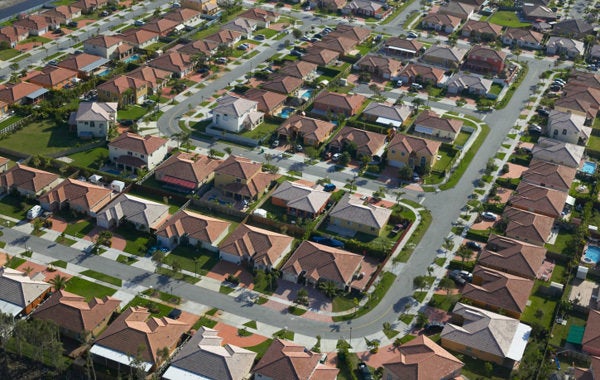
For Americans, being middle class is part of our national ethos. People who, based on income level are poor, rich or middle class view themselves, and are usually identified by others, as being middle class. The phrase can be modified by "upper" or "lower" to mean rich or poor, but for Americans a modified middle class status is more comfortable than being defined as rich or poor.
While most Americans see themselves as middle class, the notion of the middle class both defines and is defined by America. The US was the first country where a large middle class emerged and where blue collar workers, at least in some industries, enjoyed middle class lifestyles. American workers were the first to join the middle class if not in reality than certainly through their aspirations. By the middle of the 20th century, while many European countries had working class political movements, our politics, even our labor unions were framed by middle class politics and values.
In the US being middle class does not just imply a particular financial state but a set of values, and even a way of life, that is assumed to be broadly shared not only by members of the middle class, but by Americans in general. A strong work ethic, understanding the value of the dollar, striving for economic success and the promise for a better future for one's children are the values which have made the huge American middle class possible. They are also central to the broader American ethos and to the maintenance of the social fabric. When these values are threatened, as they are now, our whole society is threatened.
Because of the strong overlap between American values and middle class values, being middle class is often assumed to be the socio-economic state of nature by Americans as many people believe that absent government intervention or disruptive outside forces, a strong middle class will emerge. This is a narrative that fits very nicely with the anti-government rhetoric of the right wing and appeals to our own national confidence, suggesting that the best thing government can do for the American middle class is to get out of its way.
The history of the American middle class, however, is quite different. The middle class which arose out of post-war, and more significantly, post-depression, America was of great historical significance. It was the first mass middle class. While there were clearly Americans left out of this middle class, notably in the south where an apartheid system kept many African Americans in poverty, the post-war middle class was still larger and broader than any previous notions of middle class. Before that time, middle class status was reserved for small business owners and professionals, not for millions of blue, white and pink collar workers.
From the vantage of the 21st century it may seem inevitable that by the middle of the 20th century, the US would have emerged as a triumphant, affluent and middle class society, but it was far from obvious at the time. Enormous investments in physical, social and human infrastructure beginning in the late 19th century, accelerating in the 1930s, but continuing for decades after that were the collective midwife of the American middle class.
Thousands of graduates of public universities, which made higher education available to almost everybody who could succeed academically, formed the backbone of the post-war middle class. Employment and training programs made it possible for people to advance their careers. Social security meant that old people would no longer live in poverty as often and that younger workers would not have to spend as much taking care of their elderly parents. Through collective bargaining, insured by the Wagner Act of 1935, labor unions were able to negotiate wages and benefits so that their members were able to join the middle class as well. Primarily because of America's ugly racial history, some groups were left out of these programs and the middle class as well, but it is clear that without these, and numerous other government interventions, the middle class as we know it would not have existed.
The US government played an integral role in creating, and at times maintaining the American middle class. Today the middle class is threatened both because the values that once defined it are no longer broadly shared and because the federal government has essentially renounced its partnership with the middle class. Deregulation of the finance sector, cuts to social and physical infrastructure, regressive tax policies and irresponsible spending by both parties have put the middle class, and with it American society as we know it, at risk.
If the middle class in the US continues to whither away due to recession, constant unemployment, government policies that are not supportive of middle class Americans and that outsource jobs overseas, it will not just be formerly middle class Americans who will suffer, it will also be difficult for American society and democracy to hold together. A large and stable middle class has been central to America's wealth and stability for decades; without this middle class the country's future will be in great peril.
